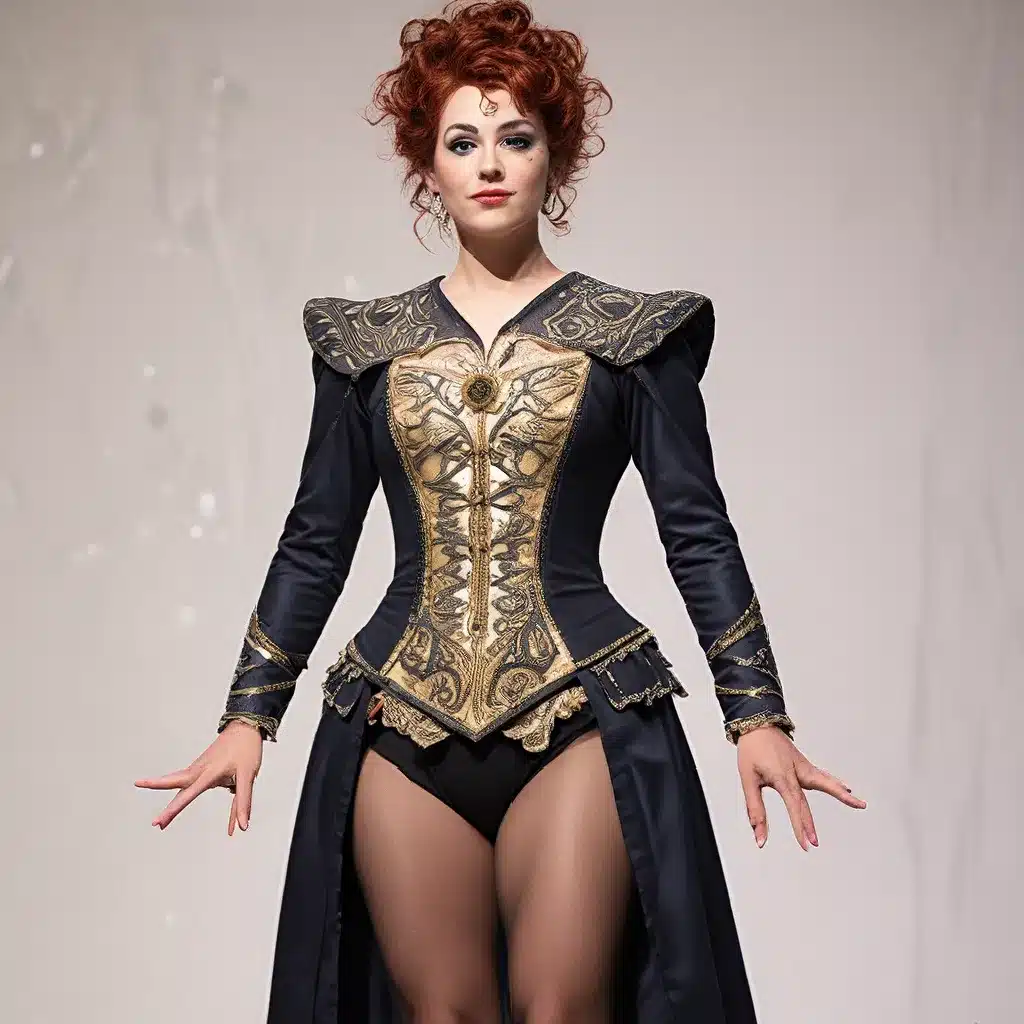
A Glimpse Behind the Curtain
As I step onto the stage, the bright lights shine down, illuminating the intricate details of the costumes that drape the performers. Each piece is a work of art, transforming the actors into the very characters they portray. From delicate lace to bold, eye-catching patterns, the costumes are the unsung heroes of the musical theater experience.
I’ve always been fascinated by the art of costume design, and my journey into this captivating world began when I had the privilege of speaking with Tramell Tillman, a rising star in the entertainment industry. Tillman, known for his acclaimed performance in the Apple TV series “Severance,” shared insights that opened my eyes to the magic that unfolds behind the scenes.
The Anatomy of a Costume
As I delve deeper into the world of costume design, I’m struck by the intricate layers that go into creating a single garment for the stage. It’s not just about finding the perfect fabric or stitching together a beautiful ensemble. It’s about understanding the character, the story, and the overall vision of the production.
Scenographer Lea Umberger eloquently describes the process: “Scenography includes the design of a production that includes both set and costume design. It is a unique opportunity to create the complete design for a production from theme, color, function, and silhouettes.”
This holistic approach is essential, as the costumes must seamlessly integrate with the set, the lighting, and the overall aesthetic of the show. Each element works in harmony to transport the audience into the world of the performance.
The Art of Transformation
One of the most captivating aspects of costume design is its ability to transform the performer. As Tramell Tillman shared, “If it weren’t for those generous souls who supported and truly saw me, I am not sure I would be the artist I am today.” The costumes play a vital role in this transformation, allowing the actors to fully embody their characters and bring the story to life.
The Theatre Museum in Oslo showcases this transformative power, displaying original costumes and stage design models from historic productions. These artifacts serve as a testament to the evolution of costume design, from the 18th century to the present day.
The Collaborative Effort
While the costume designer may be the mastermind behind the garments, the true magic happens through the collaborative efforts of the entire production team. From the seamstresses who bring the designs to life to the makeup artists who complement the costumes, every individual plays a crucial role in the overall success of the show.
Tramell Tillman’s experience at the Emmy Awards highlights the importance of this teamwork. He was surprised by other celebrities who were hesitant to approach him, fearing he might be like his character, Seth Milchick, from “Severance.” This speaks to the power of the costume in shaping the audience’s perception of the performer.
The Transformative Power of Costume
As I walk through the halls of the Musical Theater Center, I’m struck by the energy and passion that radiates from the students and faculty. They are the next generation of costume designers, each with their own unique vision and approach to the art.
One student, Maria, shares her excitement: “Designing costumes for the stage is like unlocking a secret door to a world of endless possibilities. With every stitch and every brush stroke, I have the power to transport the audience and bring the characters to life.”
Her words echo the sentiments expressed by Tramell Tillman and Lea Umberger, reminding me of the transformative power that lies within the art of costume design.
The Future of Costume Design
As I look towards the future of the musical theater industry, I can’t help but be filled with a sense of wonder and anticipation. With the rapid advancements in technology and the ever-evolving nature of the performing arts, the possibilities for costume design are truly limitless.
| Past | Present | Future |
|---|---|---|
| Elaborate, hand-crafted costumes | Incorporation of digital elements and 3D printing | Seamless integration of technology and traditional techniques |
| Reliance on historical references | Fusion of diverse cultural influences | Boundless creativity and artistic expression |
| Focused on realism and authenticity | Embracing the fantastical and the unexpected | Blending the line between reality and imagination |
As the world of musical theater continues to evolve, I’m confident that the art of costume design will continue to push the boundaries of what’s possible, captivating audiences and transforming the stage into a canvas of boundless imagination.
Conclusion: The Art of Transformation
As I reflect on my journey through the world of costume design, I’m reminded of the words of Tramell Tillman: “Trust is vital in the tender work we do. If there’s no trust, we suffer, and the work suffers.”
This sentiment encapsulates the essence of the art of transformation. It’s not just about the costumes themselves, but the collaborative effort, the trust, and the unwavering passion that goes into bringing a production to life.
Whether it’s the delicate lace of a Victorian-era gown or the bold, eye-catching patterns of a futuristic ensemble, the costumes of the musical stage are the unsung heroes, transforming not only the performers but the very fabric of the experience.
As I step back out onto the stage, the lights once again shine down, and I’m filled with a renewed appreciation for the magic that happens behind the curtain. The art of transformation is truly a testament to the power of creativity, collaboration, and the endless possibilities that lie within the world of musical theater.

